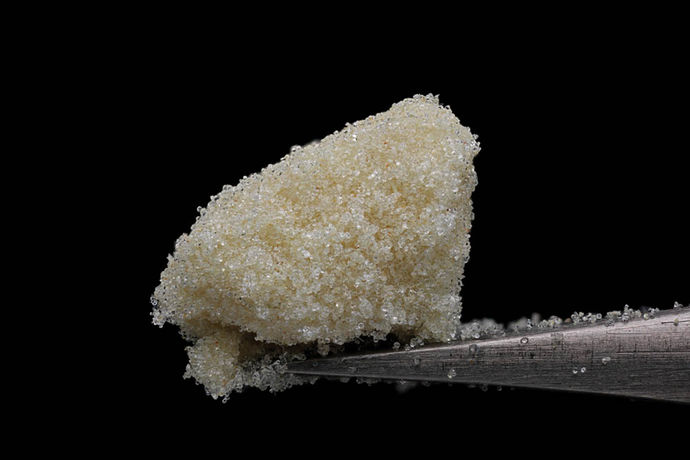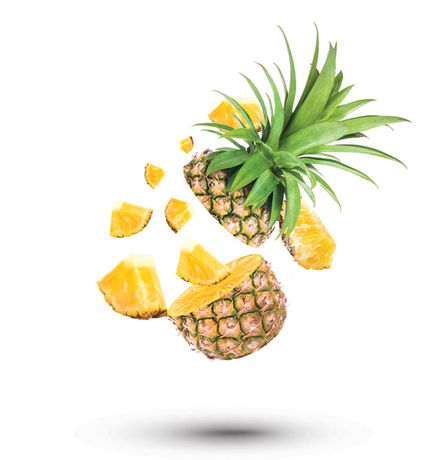Judges at this year’s Emerald Cup were presented a new tool along with their judges’ kits: a pack of 11 terpene flashcards explaining the new color-coded flavor categories under which their samples were grouped. These cards, and the information they contained, were essentially co-developed by Napro Research (creators of Phytofacts chemo metric reports) and Santa Cruz-based Cannabis testing and analysis leaders SC Labs.
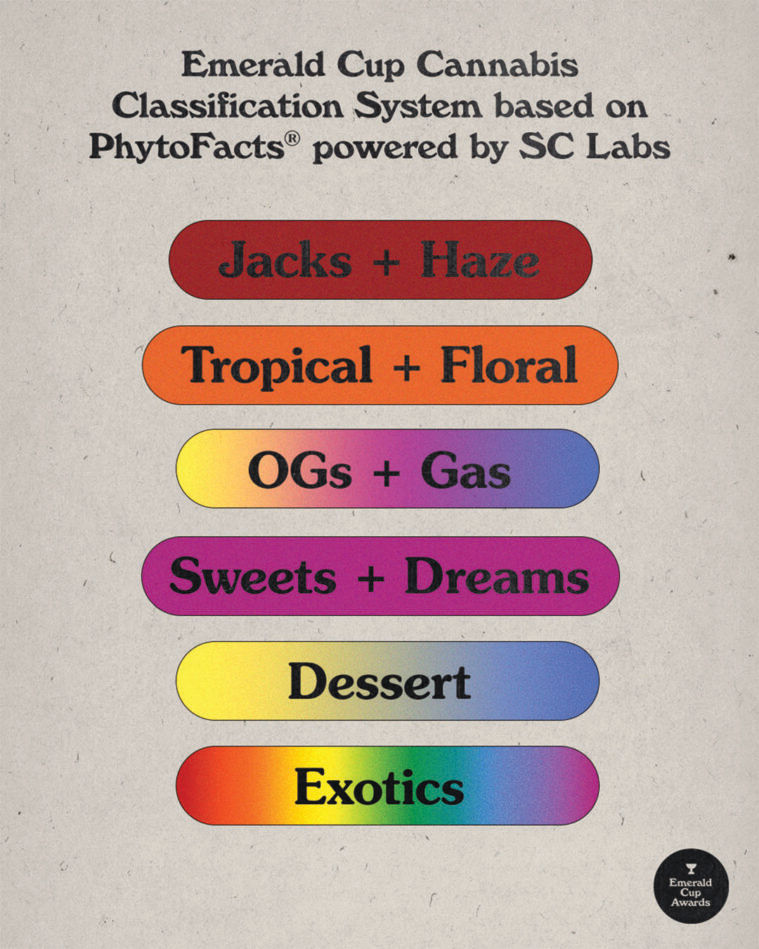
Though SC Labs was founded in 2009, it wasn’t until 2013 that they began testing for terpene content. Since then, they’ve collected lab test data on nearly 300,000 strains from across California and Oregon, and over the past few years, they’ve been working with Napro and other leading analytic companies, using state-of-the-art technologies to aggregate, sort and study all of that data. Based on their analysis, they’ve developed a scientific terpene profile classification system for Cannabis – one that was not only adopted by both the Emerald Cup and California State Fair earlier this year, but helped establish the new standard that all future Cannabis competitions (including our Leaf Bowls) are sure to follow.
We spoke with Alec Dixon – one of SC Labs’ founding partners – to get the inside scoop on how this revolutionary new classification system was developed and why it essentially renders the old labels of “indica” and “sativa” obsolete.

What exactly are terpenes?
Terpenes are basically scent particles – a class of chemical compounds found in most plants that give them their aroma.
What is their purpose?
Plants produce terpenes to deter or repel predators and lure in pollinators. I heard somebody once describe terpenes as “the universal love language of nature.”
How many different terpenes are there?
There are hundreds of different terpenes found in nature, but only five to nine primary and secondary terpenes are typically found in Cannabis.
What role do terpenes play when consuming Cannabis?
In addition to giving a strain its smell and flavor, they also contribute significantly to the various medicinal effects. When terpenes work with cannabinoids, they actually influence the plant to be more like what we historically would describe as “indica” or “sativa.”
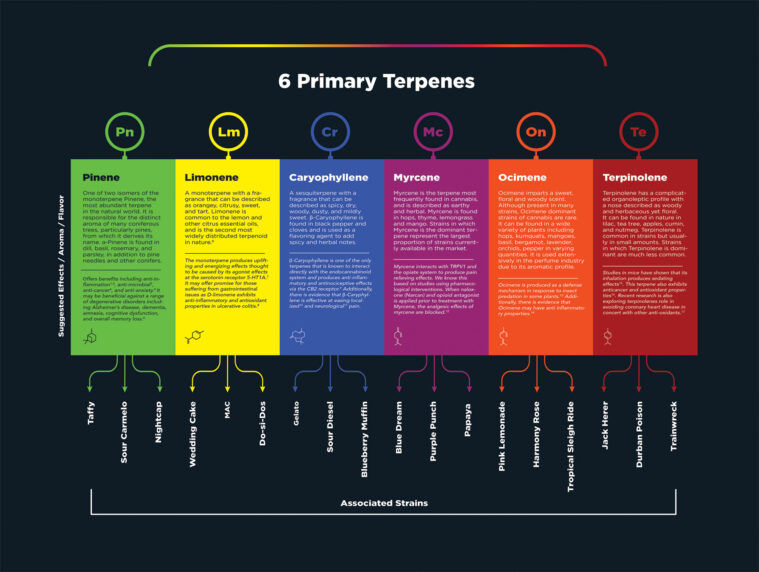
Which terpenes are found in Cannabis?
The primary terpenes in Cannabis include myrcene, caryophyllene, alpha-pinene, limonene, terpinolene and ocimene, while the secondary ones are humulene, linalool and beta-pinene.
What percentage of Cannabis is comprised of terpenes?
By dry weight, Cannabis plants can produce up to 30-40% cannabinoid content and 3-5% terpene content, as well as up to another percent or so of other trace aromatic and flavor compounds – including flavonoids, alcohol esters and thiols.
What is a thiol, and what role does it play in Cannabis?
Thiol is a volatile sulfuric compound found in some Cannabis plants that can determine whether they have a skunky and gassy smell, as opposed to being fruity or dessert-like. The human nose is one of the most sensitive scientific instruments on the planet – it can pick up scents on levels that are almost undetectable to modern chemistry instruments, particularly that “gas” smell (which it can detect in part per trillion amounts). So even though the terpenes are present in much greater concentrations than these trace thiol compounds, their presence completely changes the entire profile and can completely steamroll how a strain smells.
How did you develop your terpene classifications?
We’ve tested hundreds of thousands of samples for over 43 different terpenes, and what we’ve learned from sorting that data is that every one we’ve ever tested sorts into six primary classes. These are like the Merlots, the Cabernets, the Chardonnays, etc., of Cannabis. Then, each of these primary classes has two to three subgroupings based on the secondary and tertiary terpenes present. On the terpene spectrum, you have myrcene on one end and terpinolene on the other. Both of these archetype classes are primarily one dominant terpene with low everything else – all other profiles in the middle feature two or three terpenes in codominance.
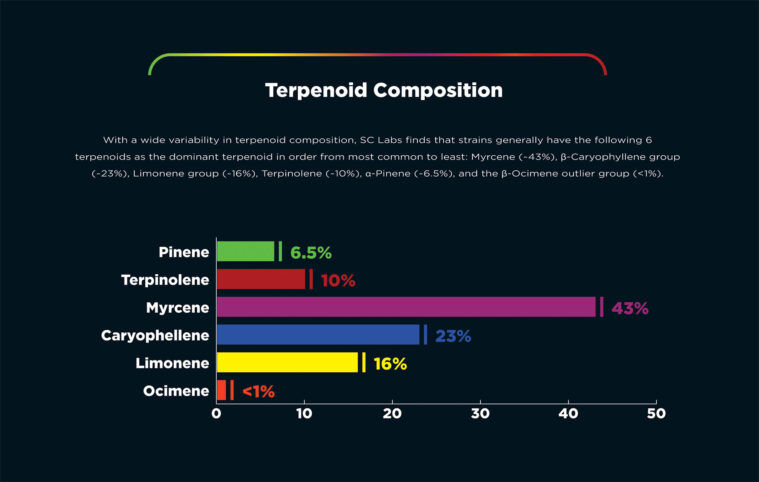
Based on your analysis, have the terms “sativa” and “indica” become obsolete? And if so, why?
The appropriate way to use the taxonomic classifications of indica and sativa is when describing various morphological growth characteristics – whether it’s a wide or narrow leaf type, differences in how the plant flowers, and whether it’s from closer or further away from the equator. But if we really want to get into how certain unique, nuanced effects are possible, we need to understand more about the ratios and synergies between cannabinoids and terpenes … because it’s those ratios and synergies that create the entourage or ensemble effect that influence the plant to be what we would historically describe as sativa or indica. So yes, the old ideas of indica and sativa have become obsolete because they limit us from exploring the full range and diversity of what this infinitely complex plant has to offer.
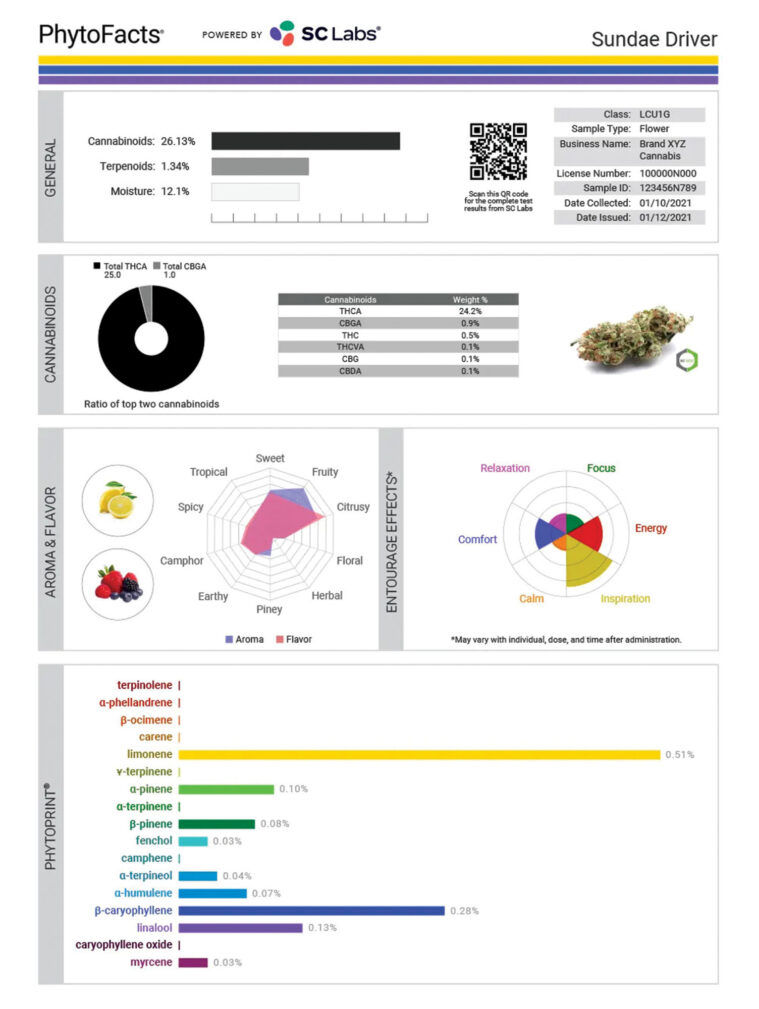
The Six Primary Flavor Classes of Cannabis
Sweets & Dreams
Dominant Terpene(s): Myrcene, Pinene, Caryophyllene
Effect Profile: Relaxing, Couch-Lock (indica)
Flavor Profile: Fruity, Hoppy, Herbaceous
All of the myrcene-dominant strains, that’s the archetype of what we called in the Emerald Cup the “Sweets and Dreams” category. Everything from Panama Red, Cherry AK, Sweet Tooth and strains like that. High myrcene with low everything else, that’s like Tangie, Forbidden Fruit, Cali O, Agent Orange. High myrcene with a little bit of caryophyllene, that’s all the purples – Granddaddy Purps, Grape Ape. High myrcene with a little bit of pinene, that’s like Blue Dream and such. High myrcene with a little bit of ocimene, that’s like Super Skunk, Dream Queen, Green Crack and Pineapple.
Desserts
Dominant Terpene(s): Limonene, Caryophyllene
Effect Profile: Stimulating, Uplifting, Comforting (hybrid)
Flavor Profile: Sweet, Spicy, Citrusy
Most “Dessert” strains are defined by a codominance of limonene and caryophyllene. Gelato, Wedding Cake, Sundae Driver, Wedding Crasher … you look at all those strain profiles, they’re all equal amounts of limonene and caryophyllene. To me, that’s a really good representation of a hybrid because caryophyllene is that comforting feeling from the “indica” side of the spectrum, and limonene’s uplifting and anti-depressive from the “sativa” side of the spectrum – and they’re there in equal amounts. Sometimes it’s higher in caryophyllene, like Girl Scout Cookies and Cherry Pie … other times, it’s higher in limonene, those are like the Berry White, Banana OG, Strawberry Banana and Ice Cream Cake.
OGs & Gasses
Dominant Terpene(s): Myrcene, Limonene, Caryophyllene
Effect Profile: Uplifting, Relaxing (hybrid)
Flavor Profile: Fuel, Pepper, Sweet
Gassy strains are typically defined by a codominance of three terpenes: limonene, myrcene and caryophyllene. Certain phenos will be higher in limonene, other phenos will be higher in caryophyllene, and other phenos will be higher in myrcene – it can shift within these few subgroups, which just shows how much range there is within the gas spectrum. If you look at classic OG or most gassy strains, they’re generally equal parts limonene, myrcene and caryophyllene. If you look at classic Sour Diesel, Chemdog or Gorilla Glue, they’re higher in caryophyllene – while certain types of couch-lock OGs, they’ll be way higher in myrcene.
Tropical & Floral
Dominant Terpene(s): Ocimene and Myrcene
Effect Profile: Relaxing, Soothing (indica)
Flavor Profile: Sweet, Floral, Tropical
This class has essentially two subgroups: the ocimene-dominant varieties and the myrcene-dominant varieties. Tropical Sleigh Ride or Passion Orange Guava, those are examples of strains that are ocimene dominant. Super Skunk or Green Crack or Dream Queen, they’re high in myrcene with just a little bit of ocimene. But you smell the ocimene so much because ocimene – if it’s there, even if it’s not the pure primary terpene, even if it’s a secondary or tertiary terpene – the smell is so present that it would naturally group together with ocimene-dominant strains.
Jacks & Hazes
Dominant terpene (s): Terpinolene, Myrcene, Caryophyllene
Effect Profile: Energizing, Cerebral, Creative (sativa)
Flavor Profile: Fruity, Hazey, Herbaceous
Cultivars in this class are largely terpinolene dominant and are what has historically been described as straight “sativa.” These strains are highly energetic, cerebral, artistically inspiring, and can be a bit overwhelming for new or first-time users. Common strains in this category include Jack Herer, Trainwreck, Durban Poison, Original Haze and Super Lemon Haze.
Exotics
Dominant terpene (s): Varied (Ocimene, Terpinolene, Pinene)
Effect/Flavor Profile: Varied
This class encompasses the rarest of profiles and all of the diverse outliers that don’t fall into one of the other major categories – including strains dominant in linalool, a-pinene, and b-pinene or ocimene without myrcene present. Better-known “exotic” cultivars include Strawberry Cough, Sour Carmelo, Juicy Gushy and Laffy Taffy.
Featured image courtesy of Outlook – Releaf Medical Cannabis / Pixabay


